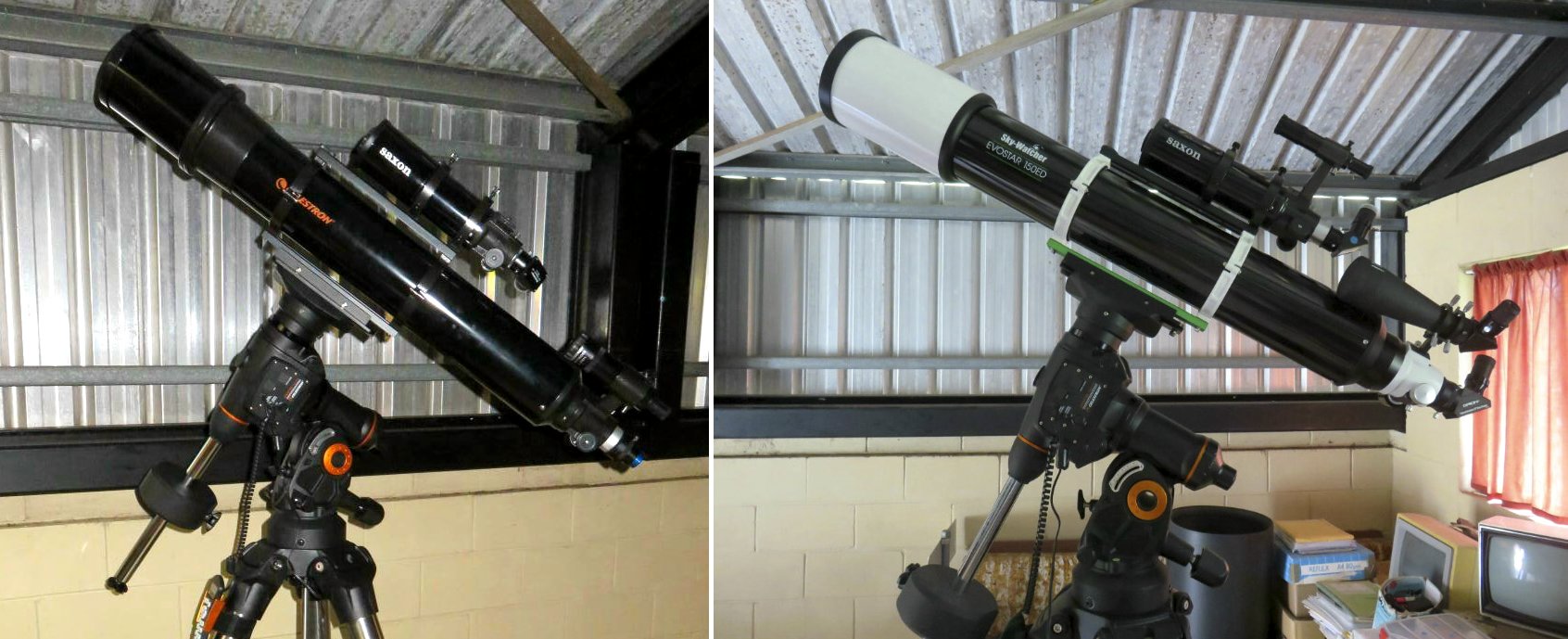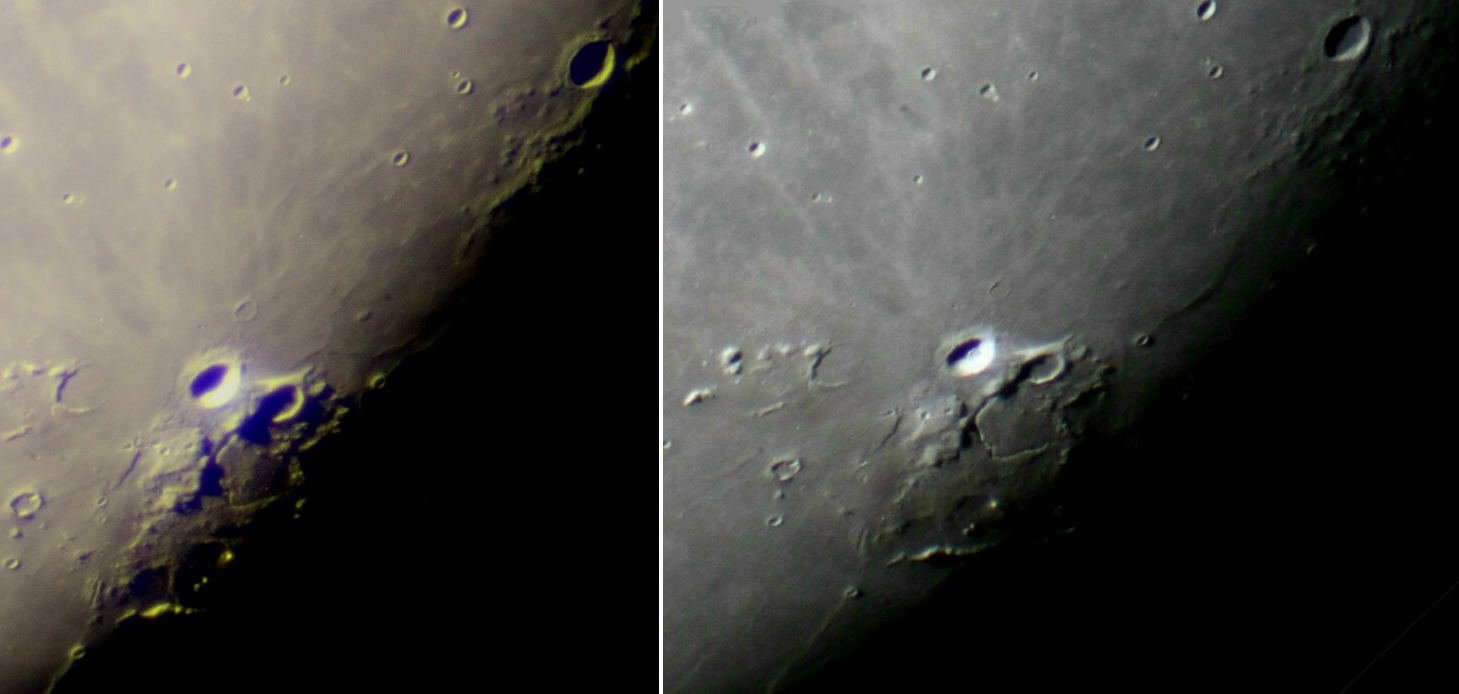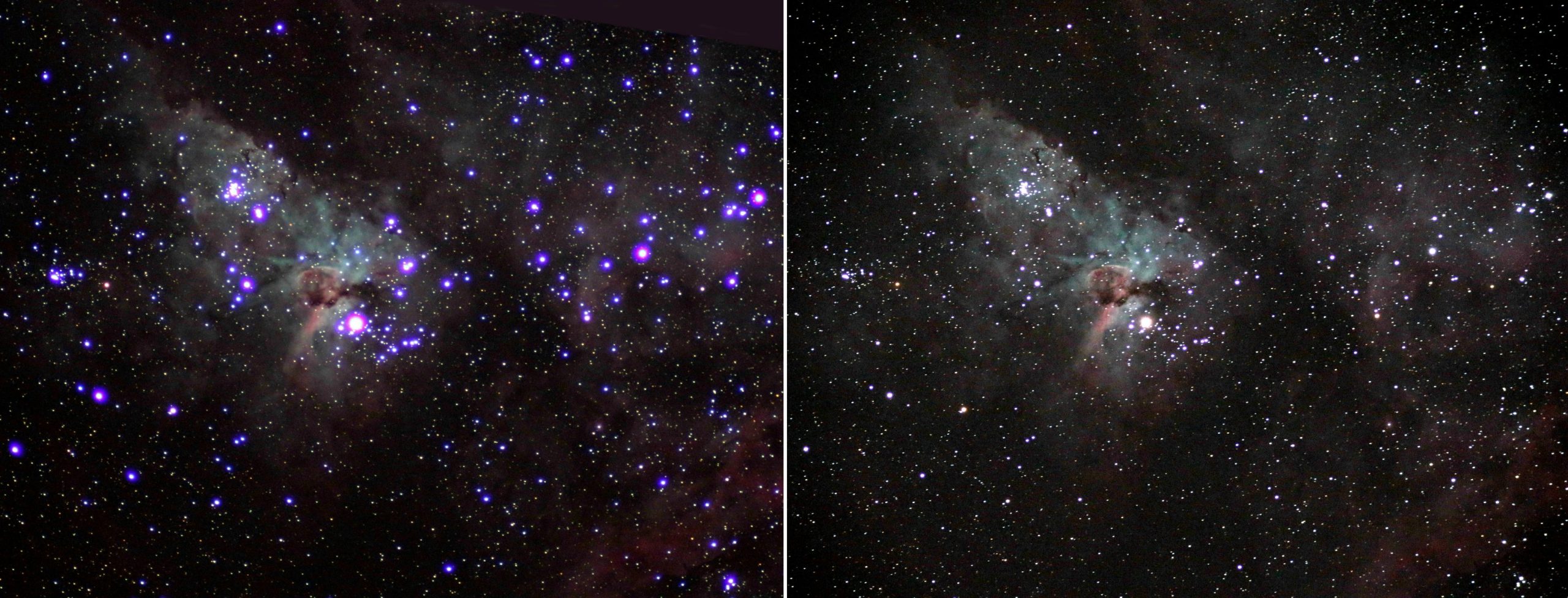Comparing similar ED & standard-glass refractors
2023 April 6

I have been involved in observational astronomy for more than 60 years. I started with a six-inch reflector in 1958, but owned a 60mm refractor in the 1960s and appreciated the clean, precise images produced by that type of telescope. So, for many years I wanted a large refractor.
In recent years instrument prices dropped, and in 2018 March I purchased a 150mm ƒ/8 (1200mm focus) Celestron achromatic refractor that I mounted on a heavy-duty Celestron DX mount. I happily used this together with my other instruments until 2020 March, when, tiring of the substantial chromatic aberration experienced with this telescope, I replaced the optical tube with a Sky-Watcher ED telescope of identical aperture and focal length.
Chromatic aberration is the failure to bring different wavelengths of light to a common focus. It results in false colour, particularly around brighter stars, and coloured fringing of edges on planetary discs, the lunar limb and terminator, etc. ED (Extra-low Dispersion) optical glass effectively addresses this.
Without changing the glass, chromatic aberration can also be dramatically reduced by simply increasing the focal ratio of the telescope. A criterion sometimes given in the past for ordinary crown-and-flint-glass doublet refractors required the focal ratio to be a minimum of three times the telescope aperture in inches. Therefore, 1,200mm focal length would be satisfactory for a 100mm aperture, but at least 2,657mm would be necessary for a 150mm refractor. The length of the instrument would then be quite impractical for the average amateur. For practicality, common commercial refractors are limited to no more than around 1,200mm focal length.
In the two years I owned the standard Celestron refractor, I widely imaged solar-system and deep-sky objects at prime focus. By adding Barlow lenses, I also enlarged the central section of the image for finer detail. After swapping the standard doublet for the ED version, I soon repeated these exercises using the same camera: a Canon 70D DSLR with a 20-megapixel APS-C-sensor.
A direct comparison can therefore be made of the images taken with the same camera at the same exposures and ISO speeds through the two telescopes. The images here have been slightly adjusted for brightness and contrast only. All the objects imaged were more than 40 degrees in altitude at the time, so the effects of atmospheric dispersion (separation of the colours by refraction in the atmosphere) are minimal. The images for Rigel and the Moon were obtained using a ×3 Barlow lens that, when projected upon the camera sensor, resulted in a fivefold amplification – namely, a final focal length of six metres.



The resolution of both instruments is excellent. Visually, the standard refractor may slightly have the edge in terms of contrast, but this perception could be influenced by nuances in the ever-present chromatic aberration giving a more colourful image. Certainly the overall colour balance is different and I suspect that the ED lens produces the more faithful colour rendition. Both lenses have only two elements, and, whilst not chromatically perfect, the ED produces very little spurious colour.
In the image of the Eta Carina nebula from the standard 150mm doublet, the blue/violet flaring of the ‘O’ and ‘B’ stars is most obvious. Both exposures were 30 seconds long at ISO 3200 at prime focus.
The visible components of the B-type multiple star Rigel (beta Orionis) are of visual magnitudes 0.1 and 6.7 at a separation of 9.5 arcseconds. The companion is readily visible in the ED image at 1/15 second exposure, but due to flaring it is not similarly visible in the standard image until the exposure has reached ¼ second, and the excessive blue halo becomes very troublesome as the exposure increases.
Bright flaring – another occasional drawback with the standard 150mm – is also obvious around the brilliant lunar crater Aristarchus. Additionally, features along the lunar limb have a greenish-yellow caste – this is quite a common occurrence with such optics. However, the resolution of the instrument is clearly superb.
The 150mm Sky-Watcher ED refractor lies at the more economical end of ED instrumentation (RRP in the UK currently is £1,819 for the optical tube), but it is nevertheless a very satisfactory performer. However, I would not detract from the performance of standard doublet refractors that generally market at less than half the price, especially in terms of their resolution. I hope that this short article and the images prove of assistance for members considering acquiring a larger refracting telescope.
| The British Astronomical Association supports amateur astronomers around the UK and the rest of the world. Find out more about the BAA or join us. |
